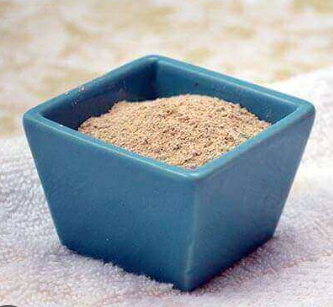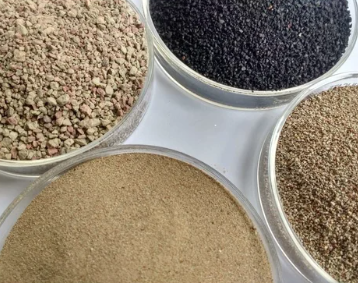- Understanding the Role of Geomembrane Liners in Waste Management
- Innovations in Geomembrane Liners for Water Management
- Geomembrane Liners: A Comprehensive Guide
- The Future of Geomembrane Liners in Civil Engineering
- Geomembrane Liners: Enhancing Landfill Stability
Manager:
WhatsApp:+86 177 0135 2670
Tel:+86 177 0135 2670
Email:marketing@okorder.com
Address:3rd Floor, No.2 Building, No.1 Sanlihe Road
What is bentonite used for?
Bentonite is a multi-purpose natural material that has application in many industries, ranging from construction to cosmetics. One of its rarely known uses is as bentonite blanket which has unique application in particular engineering and environmental projects. Next, we will explore the prolific world of bentonite that is involved with making bentonite blankets.

Understanding Bentonite:
Before talking about the specific use of bentonite blankets, it is important to understand what bentonite is and what are some of its qualities. Bentonite is a type of clay derived from volcanic ash deposits mainly composed of montmorillonite– a versatile clay mineral known for its high swelling and absorption properties. As a result, its water retaining capacity sets apart this material as an important component for different industries.
An introduction to Bentonite Blanket:
A potassium blanket also called geosynthetic clay liner (GCL) or even sodium bentonitic mat consists of layers of geotextile sandwiching a layer of sodium or potassium bentonites . This unique formation combines the hydraulic conductivities typical to bentonites with mechanical strengths similar to those found in Geotextiles thus resulting in an effective barrier system.
Whereas the environment goes:
Bentonite blankets are primarily used in environmental engineering programs like containment systems used at landfills, waste disposal facilities and remediation sites among others . The impermeable nature of the material makes it useful as far as sealing off contaminants from seeping into other soils or entering groundwater .
Landfill Liners:
In landfilling, one common use for these materials is as liners which prevent leachate from passing through into underlying soil thereby causing groundwater pollution. By installing these barriers within the waste piles, engineers can safely isolate them from the surrounding areas thus reducing pollution risks while at the same time ensuring compliance with regulatory standards.
Remediation Technologies:
Additionally, they serve as an important method for remediating contaminated sites. By applying bentonite barriers to encapsulate polluted soil or waste, pollution can be contained while also making the clean-up process easier. For example, in-situ capping with bentonite blankets is widely used for isolating contaminated sediments in rivers and lakes.
Geotechnical Engineering:
Besides environmental applications, these are commonly used as mats of various types for soil stabilization and erosion control. This is because they absorb water up to many times their weight thereby forming a tight seal when hydrated hence appropriate for sealing earthen structures like dams, levees, and canals.
Erosion Control:
Bentonite blankets are utilized in areas that are susceptible to erosion so as to reinforce slopes and prevent soil loss due to rainfall, runoff on surfaces or wave actions. Through laying them over vulnerable parts, engineers keep these vulnerable sections from washing away and thus maintain the stability of their embankments among other steep areas.
Stormwater Management:
Similarly, they have been instrumental in stormwater management systems where they serve as filtration barriers which remove pollutants and sediments from runoff water . This has been achieved by incorporating sediment traps or check dams made out of bentonite into drainage channels so that erosion is controlled while improving the quality of stormwater discharged into water bodies.
Construction Industry:
Construction industry has many uses for bentonite blankets such as waterproofing, sealant, and foundation stabilization. This dense structure of bentonite clay makes it perfect for creating impenetrable obstacles to water in basements, tunnels and underground power utility vaults.
Waterproofing:
Underground structures are prevented from being flooded by water through the use of Bentonite Blankets as a form of moisture barrier. By installing a long-lasting waterproof membrane with bentonite mats against the outer walls or foundations of buildings, constructors can prevent penetration of dampness into the building’s fabric while securing its structural integrity.
Tunneling and Excavation:
This is why engineers wrap tunnel segments around them using bentonite mats or place them along excavation walls so that they act as barriers to water entrance thus ensuring safety during underground construction activities. During tunneling and excavation works, they are used to control ground-water seepage as well as stabilizing surrounding soils with a view to improve engineering properties.

Conclusion:
In summary, bentonite is versatile enough to be used in various sectors. In different applications such as environmental engineering, construction and geotechnical projects; effective containment systems are provided by the use of these liners which help in avoiding any possible leaks. As demand for sustainable development technologies increases more innovative application like the usage of geo membranes will rise further exposing this valuable resource.”
- Previous:What happens when bentonite gets wet?
- Next:What is the difference between bentonite and HDPE?
-
2024-05-15How long does bentonite waterproofing last?
-
2024-05-15What is bentonite used for?
-
2024-05-15What happens when bentonite gets wet?
-
2024-05-15Does bentonite go bad?






